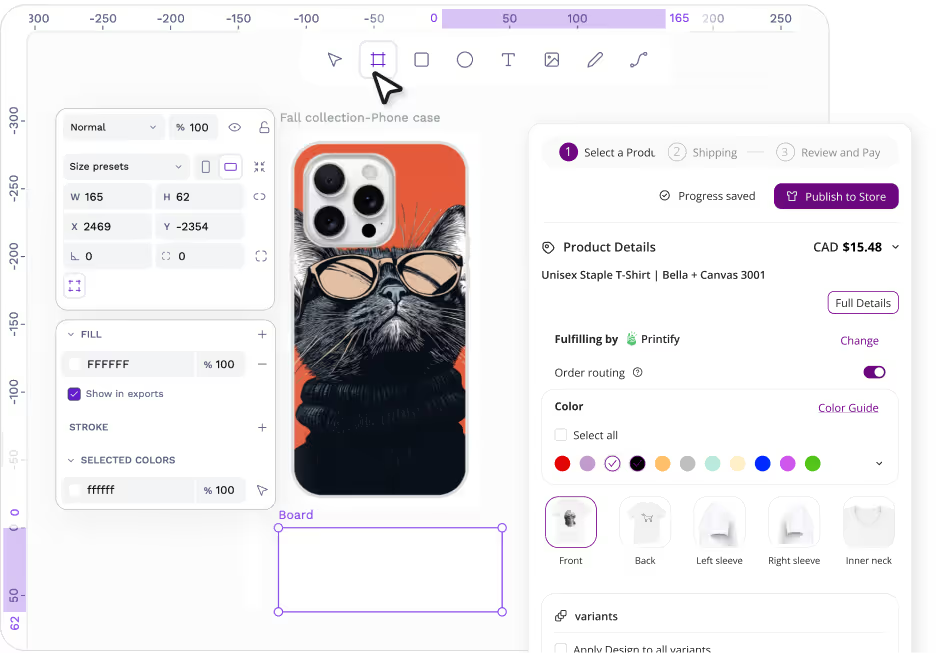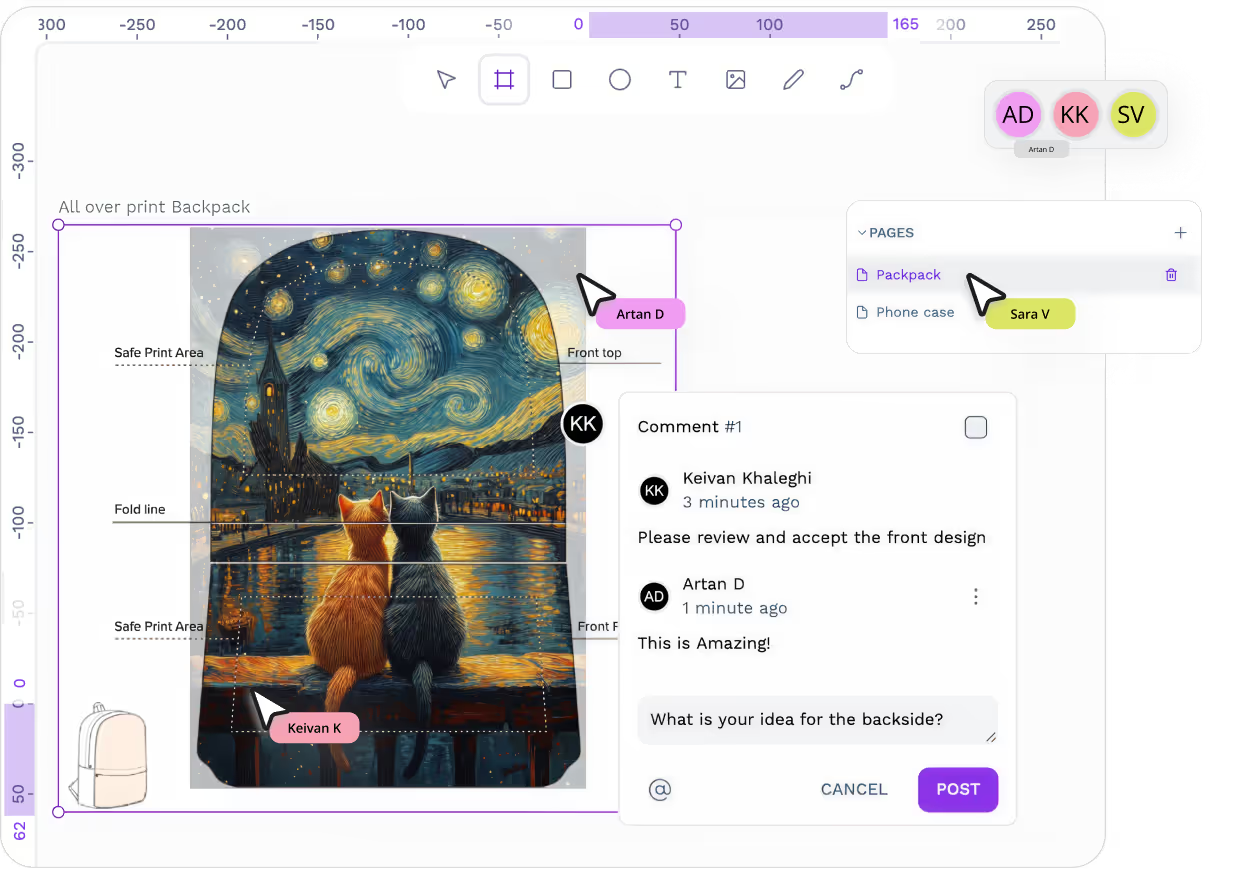The Hidden Struggles of Designing for DropShip and Print on Demand
Designing for print-on-demand (POD) and drop-ship may seem straightforward at first glance. Choose a product, upload a design, and start selling. But creators with real experience know that the journey is anything but simple.

It usually starts with a flash of inspiration, perhaps a meme from your niche, a design trend, or a quote your audience will love. You begin in a tool like Photoshop or Illustrator, refine the concept, and prepare your design. But then? Chaos. You open multiple browser tabs: a mockup tool here, a background remover there, an AI upscaler in another. Each supplier has different print areas, color profiles, and image requirements. Managing consistency across products and suppliers becomes an exhausting, repetitive process.
What was once a creative spark fades into an administrative grind. The creative process is fragmented, and creators are often stuck trying to duct-tape a functional workflow out of disconnected tools.
Design and Fulfillment: Two Worlds, Still Disconnected
At one end of the spectrum, professional tools like Adobe Illustrator and Photoshop give creators unmatched creative power. You can craft complex vector artwork, use advanced typography, layer masks, and precision controls. But these tools are isolated, they don't know what product you're designing for, can't preview live mockups, don’t show price and definitely don’t talk to your fulfillment partner. You're forced to re-export, reformat, and re-upload every time you want to switch suppliers or products.
On the flip side, print-on-demand platforms like Printful, Printify, Gelato, and others offer built-in design editors. These are often simple drag-and-drop tools that prioritize speed over depth. They're perfect for testing an idea quickly but lack depth for serious design work. You're stuck with limited fonts, inflexible templates, and no support for professional features like layer masks, boolean operations, real-time collaboration and infinite canvas.
The result? A tug-of-war between too much complexity and too little functionality. Creative freedom and fulfillment logistics are rarely part of the same conversation.
What If Design and Fulfillment Worked Together?
Imagine a space designed specifically for product creators. Not a repurposed general-purpose design tool. Not a basic editor trapped inside a fulfillment app. But a platform that:
- Offers the power and flexibility of professional design software
- Integrates directly with fulfillment partners and unlocks a wide range of product catalog
- Eliminates the need for downloading, re-uploading, and manual processes
- Supports AI-generated content and reusable assets
- Supports live collaboration and comments
Instead of managing files and specs across platforms, you work inside a seamless environment where design, product visualization, and production logistics are built into a single flow.
The PodConverge Design Studio: Built for Creators Who Think Like Entrepreneurs
That’s the philosophy behind the PodConverge Design Studio. It’s more than just a graphic editor; it’s a creator’s workspace that links every stage of the product design journey, from sketch to store.
Key features include:
- Infinite canvas: Work across multiple product views or formats on one screen
- Advanced design tools: Support for custom fonts, multi-step gradients, layer masks, Boolean logic, curve tools, and precision alignment
- AI enhancements: Generate vector graphics, upscale assets, remove backgrounds, or remix designs with the click of a button
- Real-time collaboration: Invite your team or clients to view, edit, and comment on your designs instantly
- Built-in product catalog integration: Design directly for real products with accurate specs, print areas, and variant previews
- Mockup generation: Instantly preview designs on real product mockups without extra software
- Fulfillment integration: Route designs directly to the best supplier in our network based on price, speed, and quality, without manual export

The PodConverge Design Studio is a powerful extension of a wider ecosystem that includes:
- A supplier network with transparent pricing and live production timelines
- A smart order management dashboard that tracks orders from design to delivery
- End-to-end sales channel integration, starting with Shopify, with more platforms coming soon
This isn’t just about making beautiful designs. It’s about enabling creators to scale their business without bottlenecks.
From Workflow Chaos to Creative Execution
Every week, thousands of hours are wasted on the disconnect between design tools and production workflows. POD creators face an inefficient loop of exporting, testing, and troubleshooting. Many give up or settle for basic designs that don’t fully represent their vision.
PodConverge changes this by uniting the creative and operational sides of POD into a single platform. By starting with design and connecting every piece of the pipeline, from product specs to supplier routing, we empower creators to focus on what they do best: creating, launching, and selling.
From Concept to Customer, Seamlessly
Your vision, our tools. Create, connect, and deliver with zero friction





